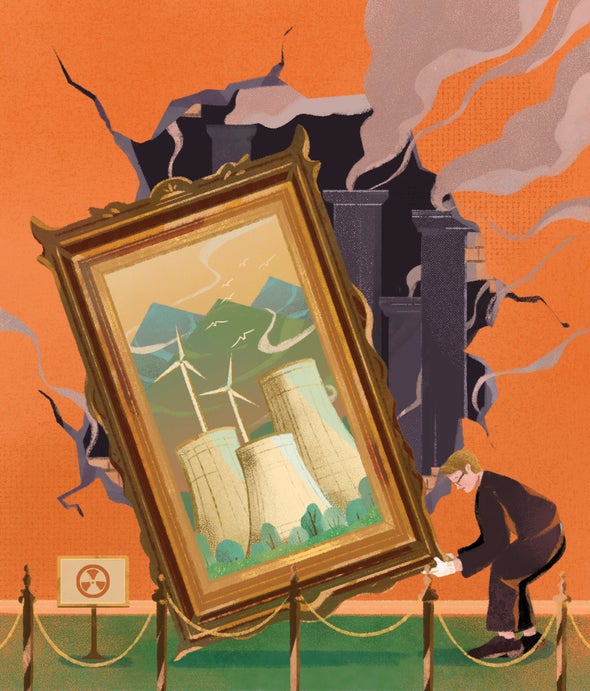Last fall my Harvard University class and I went through an exercise to help the students understand how the world might address the climate crisis and keep the average global temperature increase below two degrees Celsius. Guided by John Sterman, a management professor at the Massachusetts Institute of Technology, the students pretended to be climate negotiators, offering or blocking climate policies. Then, using En-ROADS, a computer simulation of the effects of climate policies that Sterman co-developed, they were able to see the consequences of their proposals on the 2100 average global temperature.
The exercise offered both bad news and good. The bad news is that keeping the rise in temperature below 2° C is going to be very hard and holding it under 1.5° probably impossible. The good news is that the challenge can be met—if we implement a large portfolio of solutions, the most important of which are eliminating fossil-fuel subsidies and putting a stiff price on carbon.
None of this will come as a shock to climate experts: our results were consistent with numerous reports that have argued against the silver bullet approach and in favor of “silver buckshot.” But several things surprised the students. One was that planting a trillion trees doesn’t help much, because it takes too long for them to grow. Another was that nuclear power doesn’t help either, for essentially the same reason: nuclear plants take too long to build and bring online. Globally, the average construction time is about 10 years, and you need to add many years on to that period for site selection, regulatory approval and licensing. Some notorious examples have taken much longer. The most recent nuclear power reactors built in the U.S., at Georgia Power’s Vogtle plant, were started in 2013 and are still not finished. That’s the problem with imagined “breakthrough” technologies, too. Breakthroughs can be sudden, but implementation is slow.
I left the class thinking about nuclear power. Many people think nuclear energy is going to be the climate solution (or at least a big part of it). President Barack Obama included federal loan guarantees for nuclear power in his energy plan, in the hopes of jump-starting construction and garnering Republican support. (It did neither, but some Republicans are now pushing nuclear power as the key to cleaner U.S. energy.) If I want to rile up my Twitter feed, all I need do is post something even faintly skeptical about nuclear power, and its advocates come out in force, accusing me of being a Luddite, or a troglodyte, or worse.
What is it about nuclear energy that makes its advocates so determined in the face of what should be discouraging facts? After all, unlike futuristic, untried technologies, we have plenty of facts about this one, and most of them are discouraging.
The first American civilian nuclear power plant broke ground in Pennsylvania in 1954, around the same time that physicist John von Neumann predicted that, within a few decades, nuclear power would be so efficient as to make energy “free —just like the unmetered air—with coal and oil used mainly as raw materials for organic chemical synthesis.” That didn’t happen. Today nuclear power remains the most expensive form of electricity generation in the U.S.—typically costing twice as much to operate as a fossil-fuel-based plant. While the price of renewables has dropped dramatically, the cost of nuclear has remained stubbornly high. Nuclear fission is a technology with a track record of overpromising and underdelivering.
Why then do so many people keep coming back to it? I’ve come to think it’s the same reason people turn to geoengineering and nuclear fusion (which has been “just around the corner” since 1943): the promise of technological progress. For the past century or more, humans have been accustomed to technological breakthroughs that made life easier, more comfortable and more entertaining. But climate change throws future advancement into doubt. It breaks the promise of progress. No matter what we do, we are going to be paying for the costs of our historical and current use of fossil fuels for decades to come.
So we turn to technofideism—the faith that technology will save us. Perhaps it will. But perhaps it won’t, and our long-standing patterns of behavior will have to change along with our technology. And that’s a hard pill to swallow.


